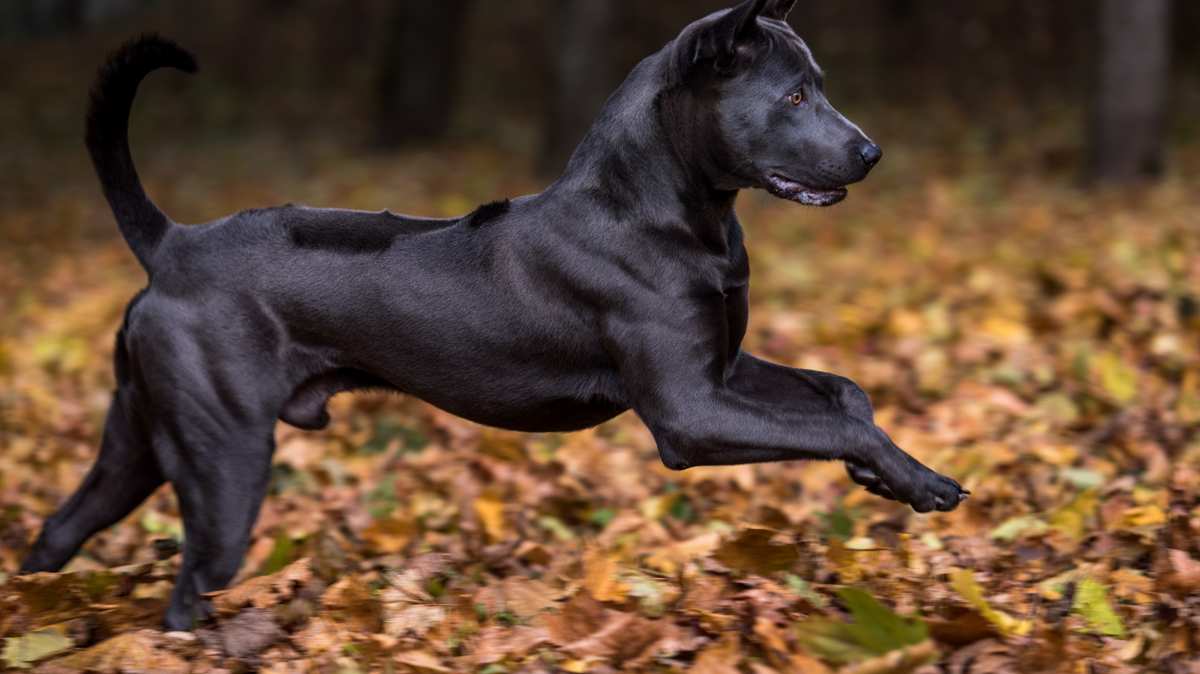Thai Ridgeback Breed Details
Below are details and specs for the Thai Ridgeback dog breed.

Rarely found outside their native Thailand, the Thai Ridgeback was bred for protection and hunting. They will devotedly guard your home, livestock, anything with their full alertness and attention. Plenty of outdoor exercise is required for this breed but otherwise they are low maintenance; they are easily trained, housebroken and groomed. Training and socialization as a puppy is necessary for the Thai Ridgeback to coexist harmoniously with other pets. They retain their strong hunting instincts and should be kept leashed when exercising them outside enclosed areas. With proper training, they will be playful and protective around respectful children. Although they may seem to have an independent, fend for yourself attitude, they still desire your presence and attention. Generally, they are healthy and will live 12-16 years without many health issues.
Below are details and specs for the Thai Ridgeback dog breed.
A medium sized breed, Thai Ridgeback males stand 22-24 inches at the shoulder and weigh 50-60 pounds. Females are slightly smaller, standing 20-22 inches at the shoulder and weighing in at 35-55 pounds.
Bred for hunting and guarding, these dogs need to be trained and socialized as a puppy in order to get along appropriately with other pets. They are loyal and protective towards the owner/family and make top-notch watch dogs. Kids should be taught how to respectfully handle pets but, otherwise, this active breed will get along with them just fine.
These dogs are low maintenance for the most part. They require very little grooming, are easily trained and housebroken and can manage brief periods alone. They do need daily outdoor exercise and are an active breed.
This breed is classified as a primitive Spitz-type dog. Documentation dates the Thai Ridgeback at least 350 years. They were used as hunting dogs and guardians of owners and property in Eastern Thailand. Those that have utilized the breed for these purposes say that they are good carting dogs and will even defend their charge from Cobras, attacking and killing them. Due to the slower development of this region, these dogs have not had many opportunities to interbreed leaving them fairly unique and unchanged. Presently, they are becoming prominent as show and companion dogs, however, it is rare to find them outside of their native Thailand. Although the breed has been recorded in the Foundation Stock Service since 1997, they were not allowed to compete in lure coursing and companion events with the AKC until 2007-2008. They are not officially recognized by the AKC and numerous other authorities including the Thai Kennel, FCI and, of course, the American Thailand Ridgeback Association.
The Thai ridgeback has a somewhat muscular look with long, limbs and a wedge shaped head. Members of this breed have a short, dense coat that covers the loose skin--which is mostly apparent on the back of the neck. The hallmark of this breed is the ridge along the spine, which is a section of hair that grows in the opposite direction of the rest of the coat. Although some are born ridgeless, the Thai Ridgeback usually has one of eight different ridge patterns. Some other notable features are their large, natural prick ears that stand straight up and their spotted tongue. Brown, almond shaped eyes are typical but amber colored is permitted in the silver and blue coated varieties. The tail is broader at the base and tapers to a point; it is carried up straight or sickle shaped.
Overall, this dog is companionable but also has a "fend for yourself" personality. Thai Ridgebacks are active, alert, intelligent and protective. They need daily outdoor exercise and would be a great companion on your daily walk, run, hike or bike. They are quite easily trained and housebroken and, therefore, will likely enjoy activities such as agility training and hunting.
They don't bark unless they deem it necessary but, despite this, make excellent watchdogs. They are very alert and protective over their families, homes, livestock or whatever else they consider it their duty to guard. To be at their best with kids and other pets they should be trained as a puppy and socialized with these family members from a young age.
Members of this breed are fairly low maintenance and have a fend for yourself attitude. They need very little grooming besides occasional brushing and bathing. They are easy learners provided their owner is confident and can firmly and consistently establish themselves as the leader. They are natural hunters and protectors so they, as athletic creatures, will need at least daily outdoor exercise.
These dogs need very little grooming for their short coats. Occasional brushing to remove dead hair is helpful; they are indeed shedders. They should be bathed as necessary.
When exercising them outside an enclosed area, make sure they are leashed; they have strong hunting instincts and may take off after a small pet or wild creature.
This breed can live indoors or out, provided they get the exercise they need. They will rarely bark and can be suitable for apartment life. Ideally, they will have a large fenced yard; note they are excellent jumpers so the fence should be appropriate height.
Thai Ridgebacks are very healthy dogs and should live 12-16 years. Bloat is a possibility with all medium to large dogs so try to avoid letting them eat rapidly. It is worth mentioning Dermoid Sinus, a genetic defect that can be felt along the spine, can result in cysts that can become inflamed and require surgery.